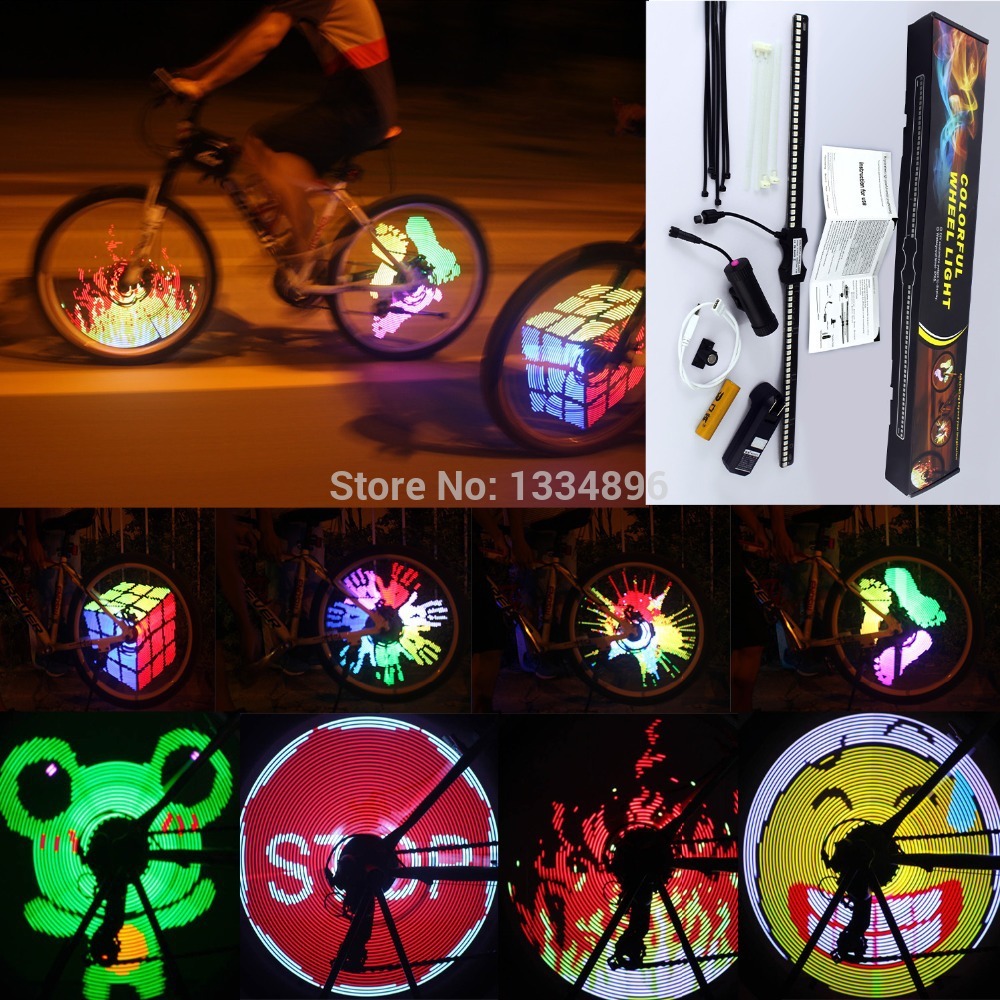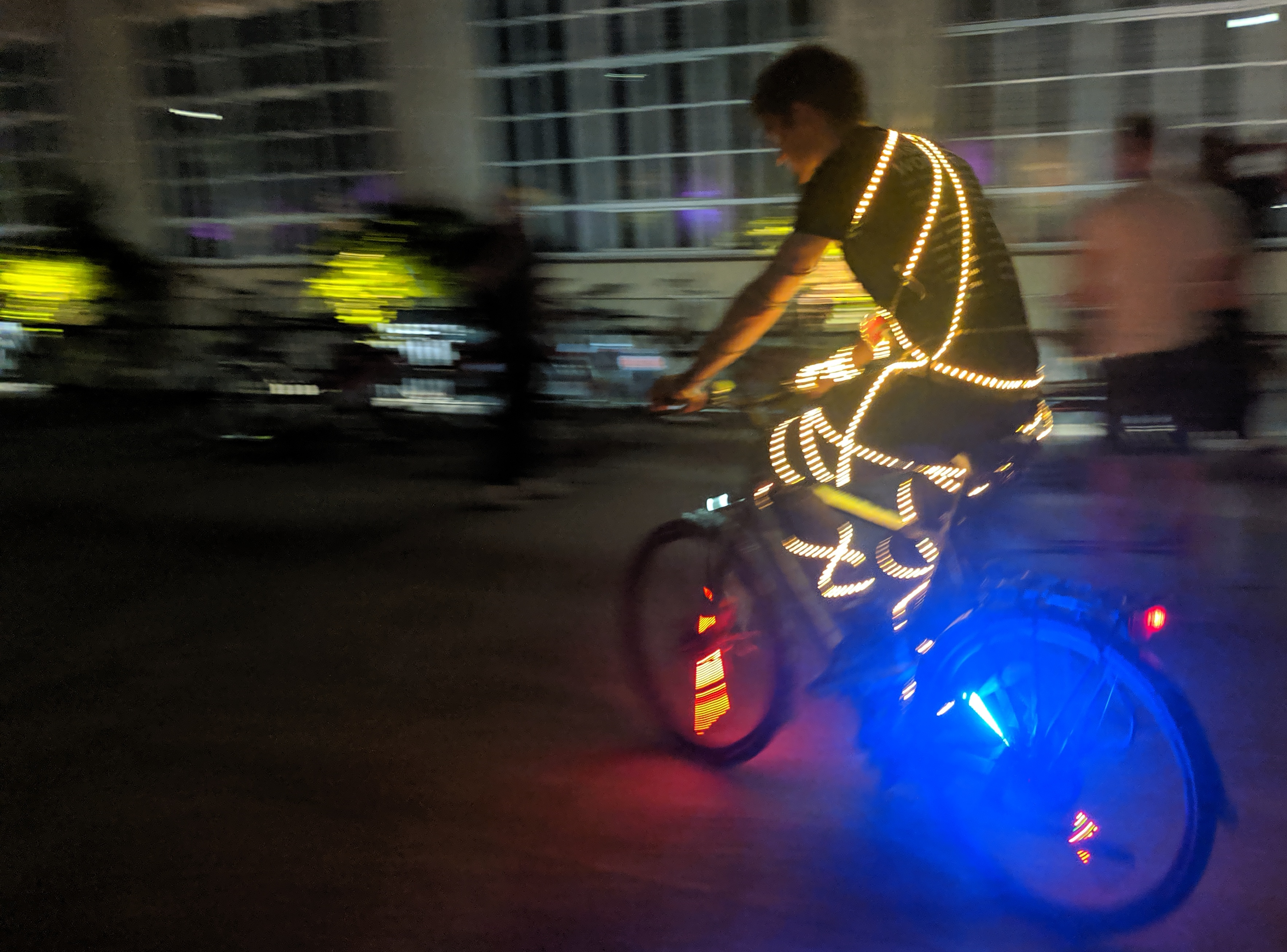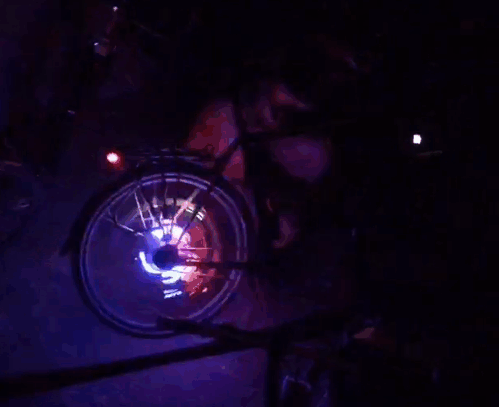Custom firmware for the YQ8003 bicycle light
This blog post is about 18 months late, but better late than never…
The YQ8003
1½ years ago, when I was still a daredevil that was biking in Philly I got interested in these fancy strips of LED lights that you put into your bike wheel and when you drive fast enough, they form a stable image, both because of the additional visibility and safety, but also because the seem to be fun gadgets.
There are brands like Monkey Lights, but they are pretty expensive, and there are cheaper similar no-name products available, such as the YQ8003, which you can either order from China or hope to find on eBay for around $30 per piece.

Sucky software
The hardware is nice: water proof, easy to install, bright, long-lasting battery. But the software, oh my!
You need Windows to load your own pictures onto the device, and the application is really unpleasant to use, you can’t easily save your edits and sequences of images and so on.
But also the software on the device itself (which sports a microcontroller) was unsatisfying: The transformation it applies to the image assumes that the bar of LEDs goes through the center of the wheel. Obviously that is wrong, as there is the hub. With a small hub the difference is not so bad, but I have rather large hubs (a generator in the front hub, and internal gears in the rear hub), and this make the image not stable, but jump back and forth a bit.
Time to DIY!
So obviously I had to do something about it. At first I planned to to just find out how to load my own pictures onto the hardware, using the existing software on the device. So I needed to find out the protocol.
I was running their program on Windows in VirtualBox, and quickly noticed that the USB connection that you use to load your data onto the YQ8003 is actually a serial-over-USB port. I found a sniffer for serial communication and used that to dump what the Windows app sent to the device. That was all pretty hairy, and I only did it once (and deleted the Windows setup soon), but luckily one dump was sufficient.
I did not find out where in the data sent to the light the image was encoded. But I did find that the protocol used to talk to the device is a standard protocol to talk to microcontrollers, something called “STC ISP”. With that information, I could find out that the microcontroller is a STC12LE5A60S2 with 22MHz and 60KB of RAM, and that it is “8051 compatible”, whatever that means.
So this is how I, for the first and so far only time, ventured into microcontroller territory. It was pretty straight-forward to get a toolchain to compile programs for this microcontroller (using sdcc) and to upload code to it (using stcgal), and I could talk to my code over the serial port. This is promising!
Reverse engineering
I also quickly found out how the magnet (which the device uses to notice when the wheel has done one rotation) is accessed: It triggers interrupt 0.
But finding out how to actually access the LEDs and might them light up was very tricky. This kind of information is not specific to the microcontroller (STC12LE5A60S2), for which I could find documentation, but really depends on how it is wired up.
I was able to extract, from the serial port communication dump mentioned earlier, the firmware in a way I could send it to the microcontroller. So I could always go back to a working state. Moreover I could disassemble that code, and try to make sense of it. But I could not make sense of it, i.e. could not understand .
So if thinking does not help, maybe brute force does? I wrote a program that would take the working firmware, zero out parts of it. Then I would try that firmware and note if it still works. This way, my program would zero out ever more of the firmware, until only a few instructions are left that would still make the LEDs light up.
In the end I had, I think, 13 instructions left that made the LEDs light up lightly. Success! Or so I thought … the resulting program was pretty non-sensical. It essentially increments a value and writes another value to the address stored in the first value. So it just spews data all over the address range, wrapping around when at the end. No surprise it triggers the LEDs somewhere along the way…
(Still, I published the program to minimize binary data under the name bisect-binary – maybe you’ll find it useful for something.)
I actually don’t remember how I eventually figured out what to do, and which bytes and bits to toggle in which order. Maybe more reading, and some advice to look for from people who know more about LEDs.
bSpokeLight
With that knowledge I could finally write my own firmware and user application. The part that goes onto the device is written in C and compiled with sdcc. And the part that runs on your computer is a command line application written in Haskell, that takes the pictures and animations you want, applies the necessary transformations (now taking the width of your hub into account!) and embeds that into the compiled C code to produce a firmware file that you can load onto your device using stcgal.
It support images in all common formats, produces 8 colors and can store up to 8 images on the device, which then circle according to the time you specify. I dubbed the software bSpokeLight.

It actually supports reading GIF animations, but I found that they are much harder to recognize later, unless I rotate the wheel very fast and you know what to look for. I am not sure if this is a limitation of the hardware (and our eyes), a problem with my code or a problem with the particular animations I have tried. Will need to experiment more.

As always, I am sharing the code in the hope that others find it useful as well. Thanks to Haskell, Nix and the iohk-nix project I can easily provide pre-compiled binaries for Windows and Linux, statically compiled for the latter for distribution-independence. Let me know if you try to use it and how that went.
Have something to say? You can post a comment by sending an e-Mail to me at <mail@joachim-breitner.de>, and I will include it here.